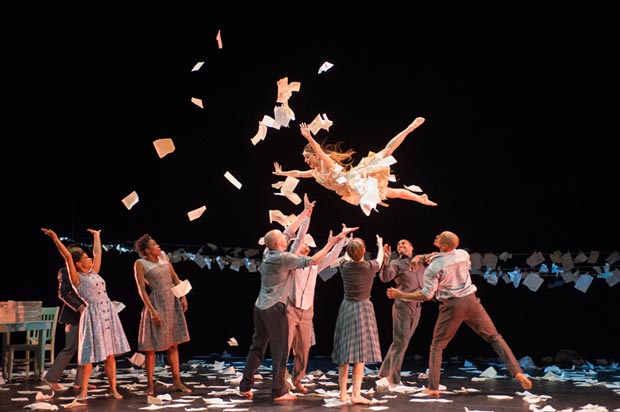
© Jane Hobson. (Click image for larger version)
Cedar Lake Contemporary Ballet
Indigo Rose, Necessity Again, Duets on a Theme of Rescue
London, Sadler’s Wells
27 September 2013
Gallery of pictures by Dave Morgan
cedarlakedance.com
www.sadlerswells.com
on tour to Cardiff, Edinburgh, Bradford, Leicester: www.danceconsortium.com
Cedar Lake’s visit to Sadler’s Wells last October was such a success that Dance Consortium is taking the New York-based company on tour to other UK centres. In the interim, the 10-year-old company’s artistic director, Benoit-Swan Pouffer, left to choreograph for Broadway and films rather than what he calls ‘concert dance’. Ballet mistress Alexandra Damiani has taken over the repertoire he chose for the current season: a triple bill of works by Jiri Kylian, Crystal Pite and Jo Stromgren.
‘Contemporary ballet’ turns out to mean a range of movement that probably requires a ballet training for most of the 16 dancers, who come from different backgrounds and countries. Kylian’s Indigo Rose (made for NDT2 in 1992) makes them resemble a Nederlands Dans Theater company; the other two pieces, created on Cedar Lake’s dancers, might suit Rambert Dance Company. Unusual for America, the combination of choreographers is less surprising this side of the Atlantic.
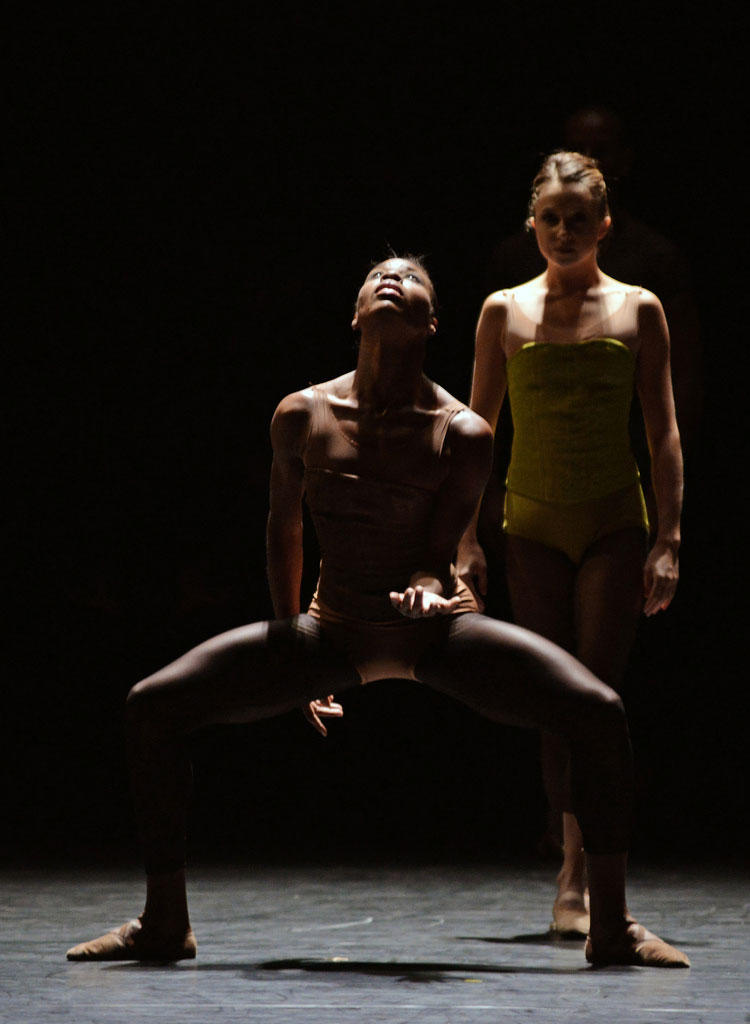
© Dave Morgan. (Click image for larger version)
The most provocative piece is the most playful: Stromgren’s Necessity, Again. He uses a recording of the voice of the French philosopher Jacques Derrida pondering: ‘I often ask myself the question Why? Sometimes I give it a name, which is necessity’. It’s a question that besets many a viewer’s/reviewer’s mind: why did a choreographer make the work we’re watching? Did he/she need to communicate something, or is it more of the same – a commission to keep the company going?
Stromgren’s response is that dance provides its own answer. It can convey states of being that can’t be rationalised in words. In Necessity, Again, he implicitly derides Derrida’s preoccupation with verbal analysis by depicting an innocent festival of pleasure, a nostalgic Eden whose sound-track is the wistful voice of Charles Aznavour remembering the past. As in Pina Bausch’s joyous pieces, the ecstatic revellers are child-like without pretending to be children. They are snappy movers, ready to strip down to their underwear and indulge in sexual abandon. The stage is festooned with paper bunting, littered with pages of confetti: no need for love letters, sonnets, reproaches, paper work. Maybe there won’t even be paper records any more in an all-electronic age.
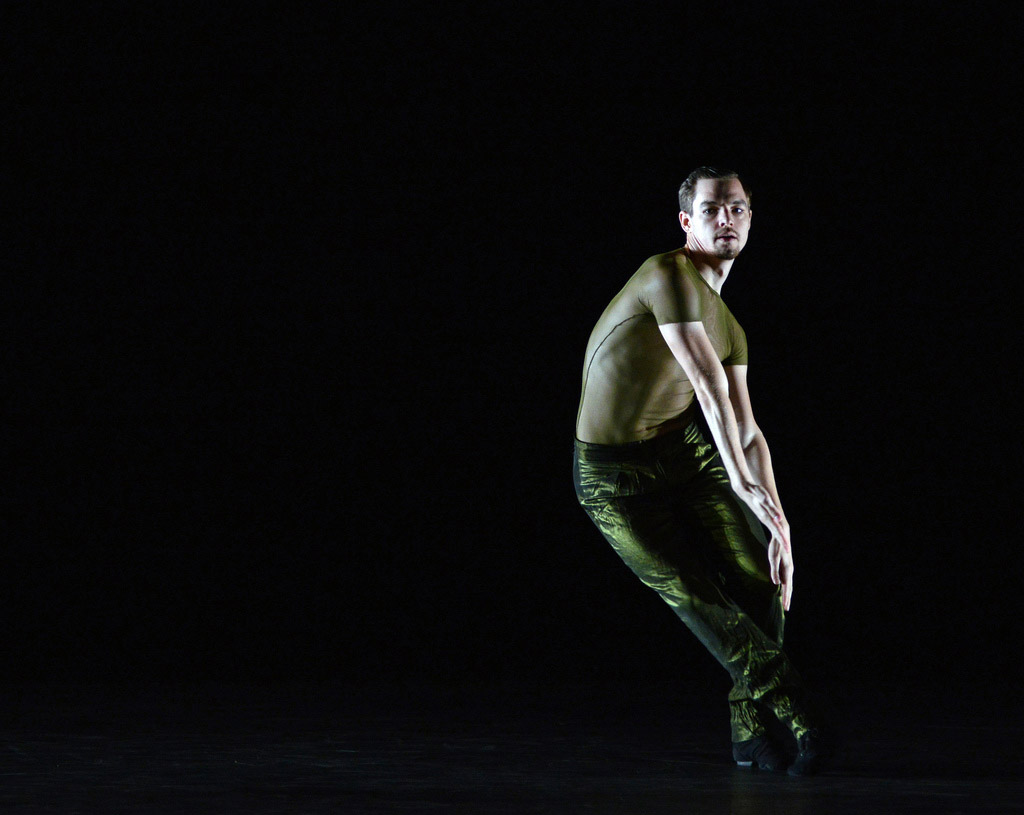
© Dave Morgan. (Click image for larger version)
Necessity, Again ends the programme on a high. Kylian’s Indigo Rose is an effective opener, provided you don’t find yourself asking why he made the choices he did. The craftsmanship is evident. Kylian is an expert at playing with agile bodies, with illusions of shadows and reality, weight and weightlessness, balance and off-balance. He contrasts percussive music for hyper-active, pseudo-ethnic dances with baroque compositions by JS Bach and Couperin for soulful duets of unspecified emotion. The dancers look skilful, combining the long lines of ballet with earthy pliés, body rolls and flexed feet. The men are warriors, sparring in boxing moves or facing up to each other, tongues out like tribal rivals; the women are athletic but malleable, folded in duets.
The ingenious set starts out as simply a diagonal of white string in a black space. Then a curtain of white silk parachutes down it, dividing the stage between light and dark. A simple theatrical device, it enables Kylian to bemuse audiences with shadows and substance. In the final sequence, black and white images of dancers (these dancers?) are projected onto the silk sail – a bare-breasted woman, arching back, some faces with eyes or mouth covered by a hand. The performers watch, frozen in a frieze.

© Dave Morgan. (Click image for larger version)
Why the projections? I’d guess, in the context of NDT2, a company for young dancers, this might have been a meditation on transcience or vulnerability. Without that context, the blurred images are meaningless, unnecessary.
Pite’s Ten Duets on a Theme of Rescue, the middle piece, has the pressure of something to say about relationships. Set in a semi-circle of spotlights surrounded by gloom, couples range through anger, affection, solace and rejection. The light, by Jim French, outlines limbs, illuminates the spaces between hands. In this intense focus, you’re aware who is in sync with whom, who is moving at a different pace. The outstanding sequence has a woman (Ida Saki) walking slowly and impassively across the lighted arena, while a man runs frantically on the spot, trying to reach her outstretched arm. When he does, he collapses at her feet, beyond rescue.
Set to a pulsing sound track from the sci-fi psychodrama Solaris (1972), the brief duets are compelling. They’re not driven by the music but by the expressiveness of gestures, the slipperiness of body language and the key word, rescue. Desolate though many of the encounters are, the piece ends with two dancers, hands linked and heads bowed, disappearing together into the darkness.
No wonder Crystal Pite, who runs her own company, Kidd Pivot, is such a sought-after choreographer.













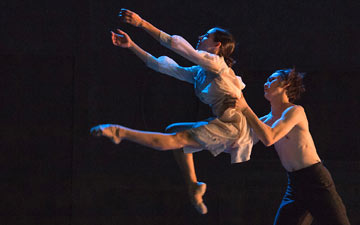
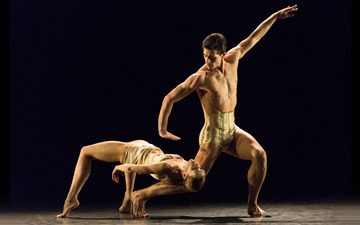
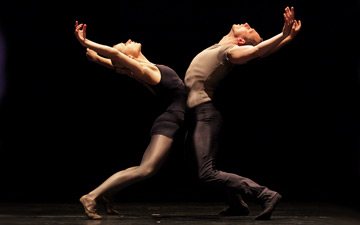
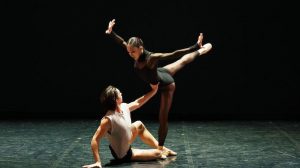
You must be logged in to post a comment.